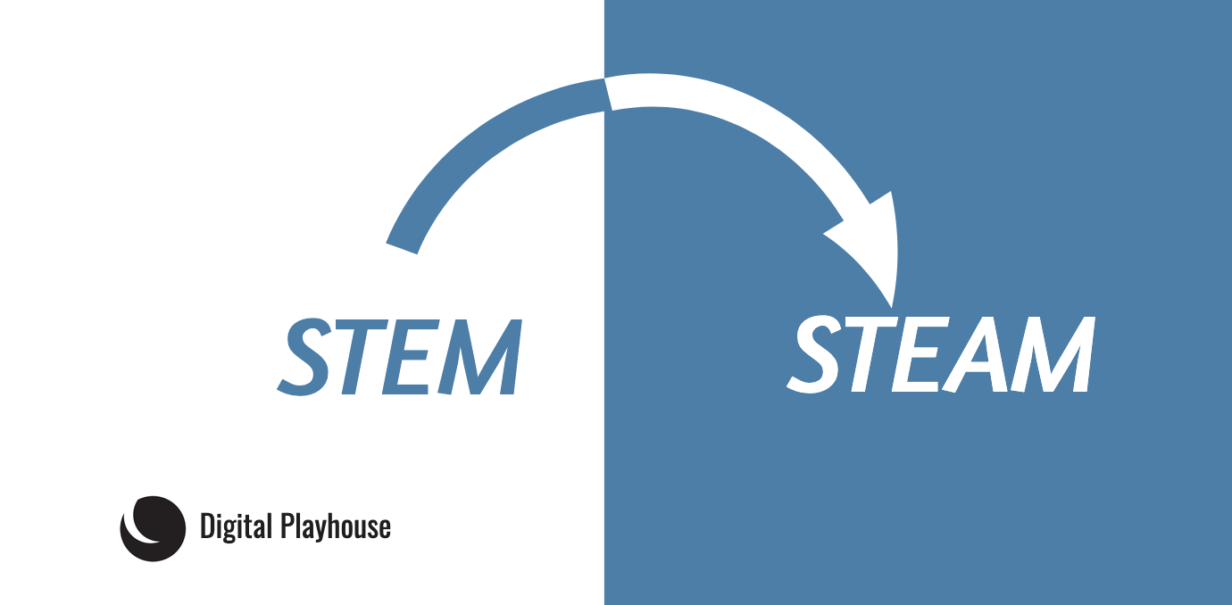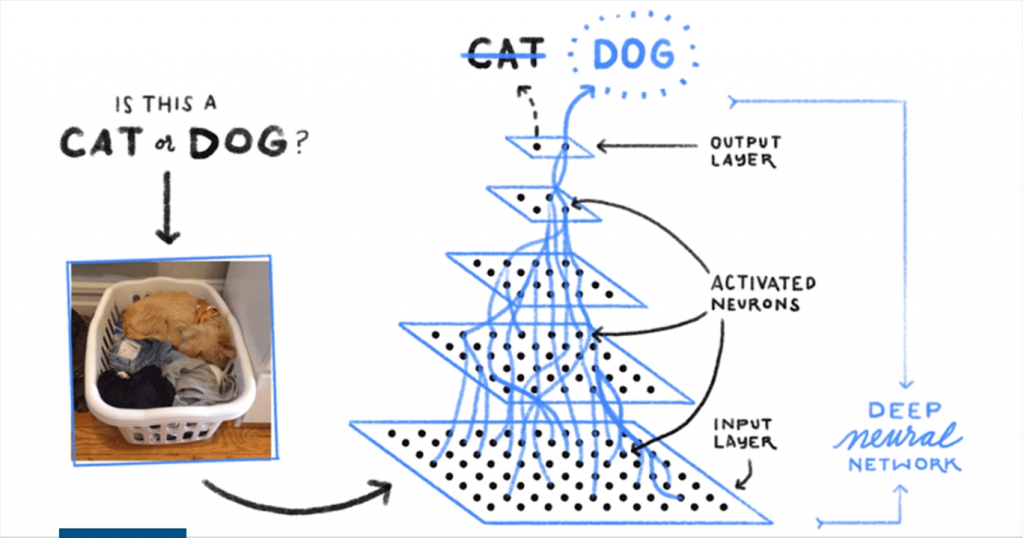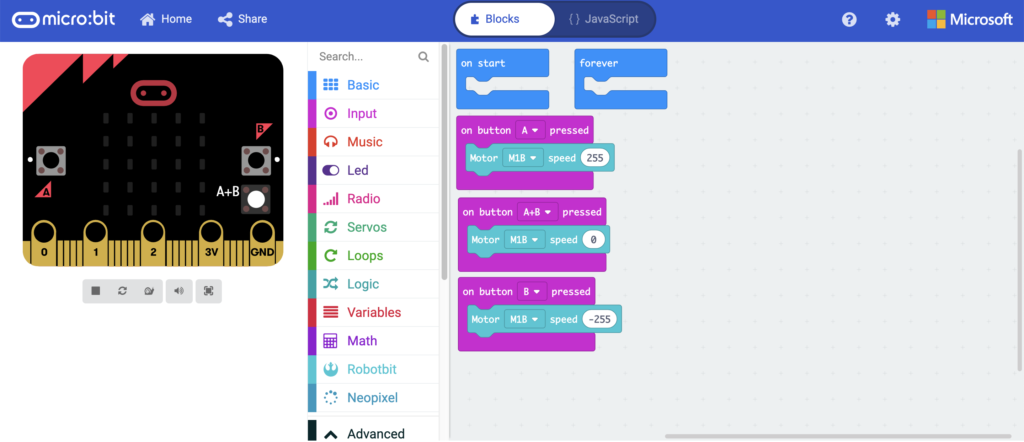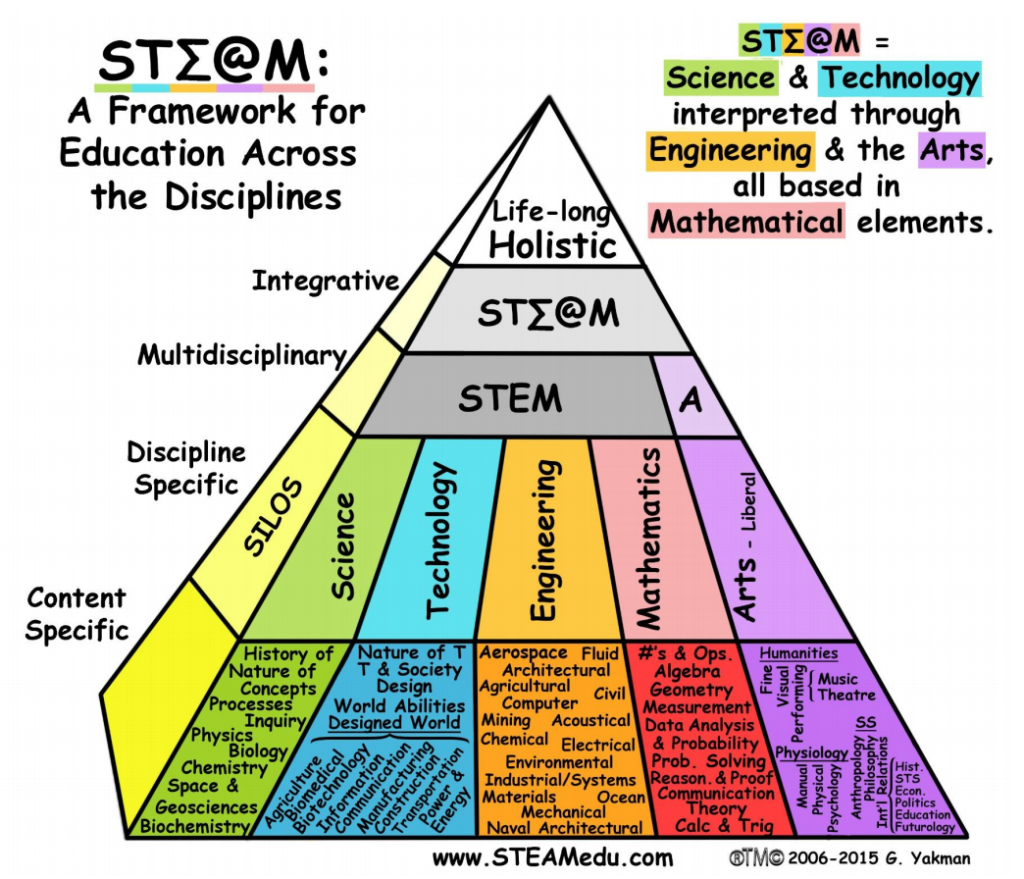
Digital Playhouse: From STEM to STEAM
The movement from STEM to STEAM education in recent years has been driven by the need to meet the demands of the 21st century economy for skilled professionals in the areas of science, technology, and engineering.
STEM to STEAM
The STEM acronym was introduced to integrate the four disciplines of science, technology, engineering, and mathematics. Rather than teach them separately, STEM integrated them into interdependent learning units that were based on applications in the real world. One of the reasons for the movement towards STEAM is that integrating arts activities can make the curriculum content come alive, increase the success of lessons, inspire creative thinking, and make the teaching-learning process more interesting for both teachers and students.
“STEAM education allows students to stay away from the fragmentation of knowledge and memorization process, and guide students to contact the knowledge between different disciplines, and continuously enhance the students’ logical thinking ability, problem-solving ability to innovate, peer cooperation ability, and self-realization of the incentive capacity. Therefore, STEAM education is conducive to the development of a creative and innovative spirit of the comprehensive development of people, to support them as future inventors and creators.”
- Developing STEAM Education to Improve Students’ Innovative Ability, Zhao Hui Chen, Steam Education

Digital Playhouse and STEAM education
Creative and logical thinking isn’t just for science, technology, engineering, and mathematics. They are core skills that all children should have, train, and develop from a young age. Digital Playhouse believes that the concept of thinking outside of the box is outdated. The current and future tech-driven world has no limits and we believe that children will thrive in this new concept of unlimited imagination. Logical thinking isn’t just for children in the world of science and technology, but is critical for each and every child to have regardless of the field they may want to enter.
Digital Playhouse believes that we can give your children a head start in this digital world. Artificial Intelligence (AI), the Internet of Things (IOT), or robots and droids, everything comes down to the basics of coding, programming, and the basics of software development.

Services or Platforms for Implementation of STEAM:
- LEGO Boost – makes coding fun. Learning how to code is quickly becoming the norm as part a part of STEAM education. LEGO Boost strikes the right balance between simplicity, depth, and fun to introduce children to the ins and outs of coding and robotics.
- LEGO Mindstorms – expands on the capabilities of LEGO Boost, adding flexibility for children to sharpen their coding skills in a variety of categories. Mindstorms allows children to understand coding in a tangible environment with the use of touch and color sensors, infrared, and motors.
- micro:bit – a pocket-sized programmable computer. The micro:bit was designed to encourage children to become actively interested in coding and programming softwares for computers.
- Arduino – a single-board microcontroller that is used for building digital devices as well as physical objects. The Arduino was initially created in order to make the idea of creating robots, thermostats, motion detectors, and similar devices available to the general public.
- Board Games – aren’t just for fun and recreation, but can be crucial to a child’s brain development. Other than promoting strategic and logical thinking, board games improve focus, attention, spatial reasoning, and critical and creative thinking skills. All of these basic skills are critical to a child advancing in the world of coding and software development.
What the Children will Learn
- The role of sensors, motors, and communication devices
- The concept of Loops and different ways to code
- What are Functions and how to code them
- Code Conditioning
- What are Operators (i.e. XOR, AND, OR) and how to use them
- What is Encapsulation and how to use it for effective coding
- The concept of a Database ways to properly store data


Why Coding and Programming?
It’s next to impossible to imagine life without software. We wake up to the sound of our digital alarm clocks, we make phone calls that are controlled by software, we are almost permanently connected to a network by our phones or computers, we navigate Bangkok’s labyrinthian streets using Google Maps, we shop online on our computers or through apps on our phones, we watch movies through various apps, and even our washing machines are programmed to clean our clothes. It took a programmer to make all of these things possible and they are all a huge part of our daily lives. Understanding how they work and are created is vital for children in order to prepare them for future jobs and also to help them to develop various thinking skills.
With the IT market growing faster than students are being educated to manage it, it’s easy to think that the purpose of teaching coding and programming is in order to fulfill the need for workers in the field. But, that would be wrong. Coding isn’t difficult. What it does is involve a lot of troubleshooting. In terms of coding, this would be called debugging and it is defined as the act of identifying and correcting errors in code during software and/or hardware development. Sometimes a tool or program can be used to help. By teaching children to code, we’re providing them with not only the techniques to solve problems in IT, but with techniques that can also be applied to develop new creative ways of thinking or problem-solving in their personal or professional lives.
The Importance of STEAM Education
For the longest time, education has been run under the idea that the final goal or purpose was to ensure that students get a good job. It may have worked in the past, but how can we prepare students for future jobs that might not even exist as of yet? What we need to do is facilitate an educational environment that is constantly changing and relevant.

Source: acsa.edu.au
The world is complex and interconnected in ways that we cannot even begin to imagine, so how is it that we can fit education into one simple box? STEAM education allows us to integrate assessments, concepts, standards, and topics to disrupt the typical, and what has become complacent, course of events for our children. By breaking down the walls of separation between STEM and the Arts, we can get to the heart of education and what it is to prepare for an unknown future.

